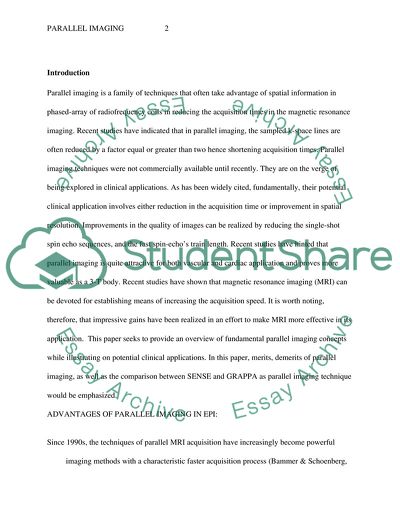Cite this document
(Parallel Imaging Report Example | Topics and Well Written Essays - 2500 words, n.d.)
Parallel Imaging Report Example | Topics and Well Written Essays - 2500 words. https://studentshare.org/physics/1799466-what-are-the-advantages-and-disadvantages-of-parallel-imaging-provide-examples-of-how-could-these-impact-its-use-in-the-clinic-compare-and-contrast-auto-sense-and-grappa-reconstructionswhen-would-you-choose-to-use-one-or-the-other-in-clinical-setting
Parallel Imaging Report Example | Topics and Well Written Essays - 2500 words. https://studentshare.org/physics/1799466-what-are-the-advantages-and-disadvantages-of-parallel-imaging-provide-examples-of-how-could-these-impact-its-use-in-the-clinic-compare-and-contrast-auto-sense-and-grappa-reconstructionswhen-would-you-choose-to-use-one-or-the-other-in-clinical-setting
(Parallel Imaging Report Example | Topics and Well Written Essays - 2500 Words)
Parallel Imaging Report Example | Topics and Well Written Essays - 2500 Words. https://studentshare.org/physics/1799466-what-are-the-advantages-and-disadvantages-of-parallel-imaging-provide-examples-of-how-could-these-impact-its-use-in-the-clinic-compare-and-contrast-auto-sense-and-grappa-reconstructionswhen-would-you-choose-to-use-one-or-the-other-in-clinical-setting.
Parallel Imaging Report Example | Topics and Well Written Essays - 2500 Words. https://studentshare.org/physics/1799466-what-are-the-advantages-and-disadvantages-of-parallel-imaging-provide-examples-of-how-could-these-impact-its-use-in-the-clinic-compare-and-contrast-auto-sense-and-grappa-reconstructionswhen-would-you-choose-to-use-one-or-the-other-in-clinical-setting.
“Parallel Imaging Report Example | Topics and Well Written Essays - 2500 Words”. https://studentshare.org/physics/1799466-what-are-the-advantages-and-disadvantages-of-parallel-imaging-provide-examples-of-how-could-these-impact-its-use-in-the-clinic-compare-and-contrast-auto-sense-and-grappa-reconstructionswhen-would-you-choose-to-use-one-or-the-other-in-clinical-setting.


